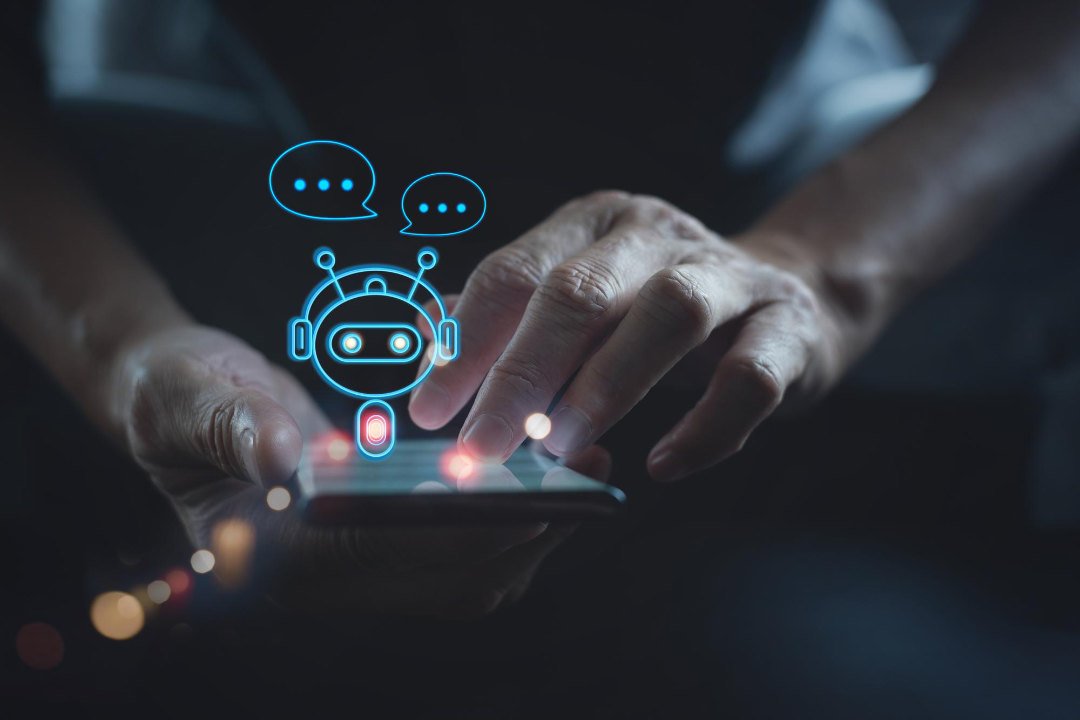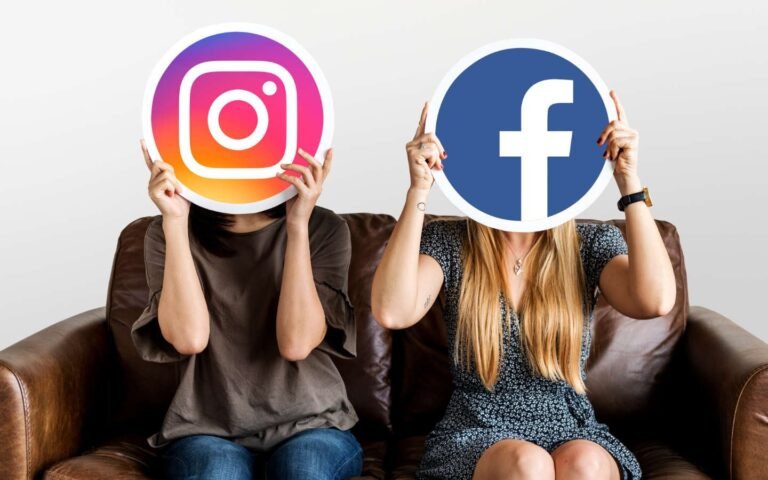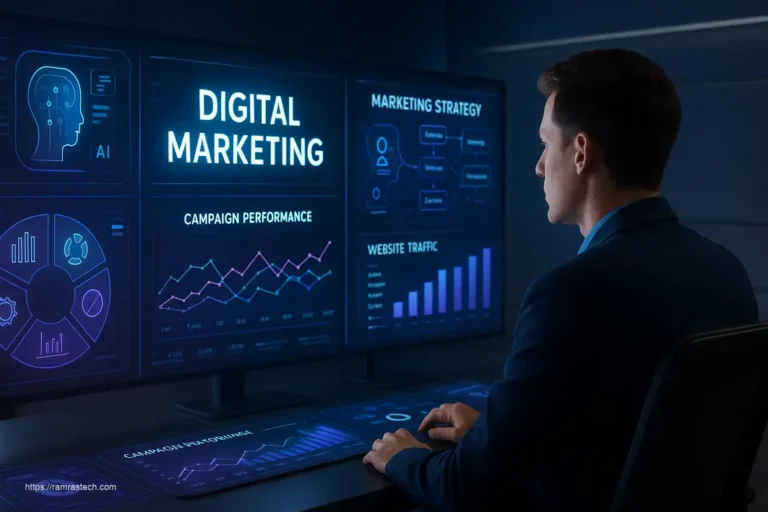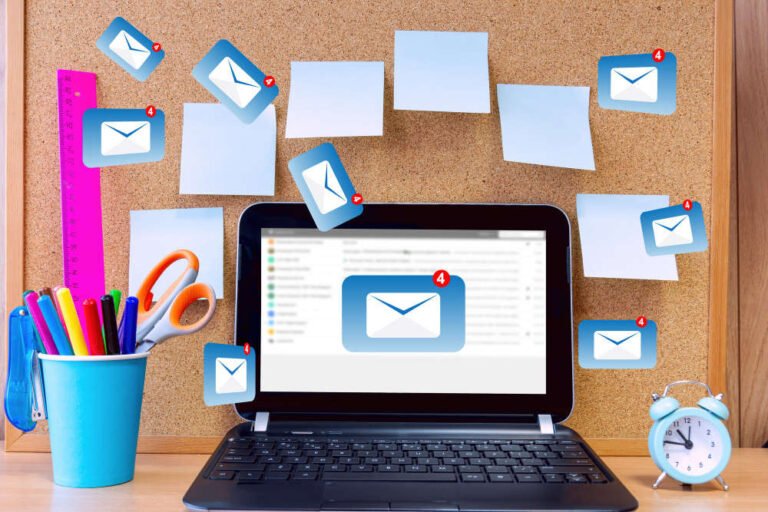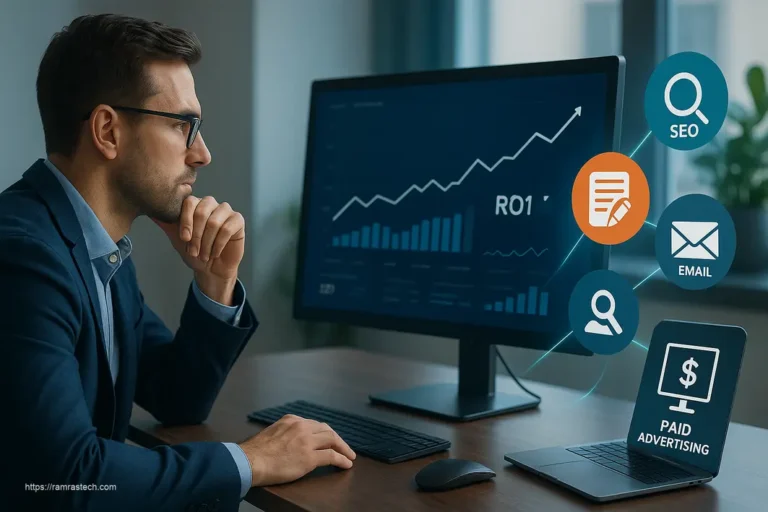Did you know that 82% of consumers expect an immediate response from brands on marketing and sales queries?
In fact, traditional customer service teams often struggle to meet this demanding expectation. However, chatbots for lead generation are changing this landscape, operating 24/7 and handling multiple conversations simultaneously.
The numbers speak for themselves – the AI chatbot market is projected to grow at a remarkable 23.3% CAGR from 2023 to 2030, with chatbots already automating up to 73% of tasks in sectors like healthcare.
That’s why we’ve created this comprehensive guide to help you harness this powerful technology. We’ll walk you through the essential steps of building effective chatbots that not only capture leads but also qualify prospects and streamline your sales process.
Ready to transform your lead generation strategy? Let’s dive in!
Understanding Chatbots for Lead Generation
“Call centers, websites, and mobile apps are no longer the only means of interaction with brands. Chatbots are fast becoming a business imperative for businesses that want to engage with their customers. Online chat through chatbots has grown faster than any prior channel.” — Eileen Brown, Technology journalist at ZDNet
Lead generation chatbots have fundamentally changed how businesses connect with potential customers. These AI-powered tools engage website visitors in real-time, creating interactive experiences that traditional lead forms simply cannot match.
What makes chatbots effective lead generators
Unlike static forms that often feel impersonal and tedious, lead generation chatbots guide visitors through conversational experiences, making it easier to collect contact information and qualify leads. The interactive nature of these conversations significantly improves engagement rates – some businesses have increased conversion rates to over 40% compared to the average landing page conversion rate of just 2.35%.
These AI assistants excel at lead generation primarily because of three key capabilities:
First, they offer 24/7 availability, capturing leads at any hour without human intervention. This ensures that your business never misses an opportunity, even during off-peak hours or across different time zones.
Second, chatbots handle multiple interactions simultaneously, efficiently managing leads from various sources including SEO, PPC, and organic traffic. This scalability allows them to process countless queries without getting overwhelmed.
Finally, their conversational AI powered by Natural Language Processing enables them to understand user intent and respond naturally. This creates a human-like experience that builds trust and encourages visitors to share their information more readily.
Types of lead generation chatbots
Depending on your business needs, you can implement various types of chatbots:
- Qualification chatbots – These ask targeted questions to filter out unqualified leads, ensuring your sales team focuses only on high-potential prospects. They assign scores to visitor responses, helping prioritize follow-up efforts.
- Scheduling chatbots – Connected to your calendar, these bots allow visitors to book appointments or demos without back-and-forth emails. When a prospective patient visits a clinic’s website, for instance, the chatbot can handle scheduling effortlessly.
- Product recommendation chatbots – By analyzing browsing behavior or asking preference questions, these bots suggest relevant products to visitors, increasing conversion potential. This personalized approach makes customers 200% more likely to convert.
- Information-gathering chatbots – These collect valuable customer data such as preferences, behaviors, and pain points. The information gathered helps determine trends and patterns for refining marketing campaigns.
Key benefits for your business
Implementing chatbots for lead generation delivers measurable advantages for your business. First, they significantly reduce acquisition costs by automating lead capture and qualification processes. Animal Equality, an international organization, saw their cost per lead drop to just €2.33 through their WhatsApp chatbot implementation.
Additionally, chatbots integrate seamlessly with CRM systems, automatically logging captured leads and reducing data entry errors. This integration ensures no opportunity is missed and enables personalized email workflows for nurturing leads over time.
Furthermore, these AI assistants provide valuable insights from conversation data. By analyzing interactions, you can identify customer trends and behaviors to use in targeted marketing campaigns.
Perhaps most importantly, chatbots improve user experience through immediate responses. With 83% of visitors preferring instant assistance upon contact, chatbots keep potential leads engaged rather than frustrated by waiting times.
Planning Your Lead Generation Chatbot Strategy
Success with chatbots for lead generation begins with thorough planning. Without a clear strategy, your chatbot will be like a ship without a compass, directionless and ineffective. Let’s explore how to create a foundation for your lead generation chatbot that drives results.
Setting clear lead generation goals
The first essential step is defining exactly what you want your chatbot to achieve. Ask yourself: What specific information must you collect from potential leads? This might include contact details, industry information, budget parameters, or their particular needs. Setting these objectives early will guide every aspect of your chatbot’s design.
Your goals should align with your overall marketing and sales strategy, ensuring you can measure success and optimize performance over time. Consider these questions when establishing your chatbot objectives:
- What qualifies as a lead for your business?
- Which key data points will help your sales team follow up effectively?
- How will you measure conversion success?
By establishing clear criteria to prioritize leads, you create a tailored approach to qualification that maximizes efficiency. This strategic foundation ensures your chatbot doesn’t simply collect information but gathers precisely what your business needs to convert prospects into customers.
Mapping the customer journey
Customer journey mapping is critical for effective lead generation. This visualization method helps you understand how users interact with your brand across different touchpoints. Consequently, you gain valuable insights into the path customers take from awareness to conversion.
Journey maps typically consist of:
- User personas based on your target audience
- User flows showing typical paths through your content
- Scenarios built on qualitative and quantitative data
This mapping process creates deep insights into your industry, brand, competitors, and users. Moreover, these dynamic documents should be regularly updated with input from stakeholders across your organization to provide multiple perspectives.
Through proper journey mapping, you can identify pain points and areas for improvement, resulting in a higher conversion rate. This understanding allows you to anticipate customer behavior and provide personalized experiences that build trust and foster long-term relationships.
Identifying key touchpoints for chatbot implementation
Once you understand the customer journey, you must determine where your chatbot will have the greatest impact. Define specific triggers that prompt your chatbot to engage visitors, including:
- Time spent on a particular page
- Pages visited in sequence
- Visitor location or referral source
- Specific actions taken on your site
For each touchpoint, craft welcoming and context-specific opening messages that foster a positive first impression. Your chatbot shouldn’t sit idle while visitors navigate your website—it should proactively engage at strategic moments.
Additionally, consider implementing conditional logic to create dynamic, responsive dialogs based on user responses. This approach allows your chatbot to adapt conversations based on previous interactions, making the experience feel more natural and personalized.
Remember that no lead is too cold. Even visitors who don’t immediately convert can be retargeted with subsequent marketing strategies if your chatbot effectively collects their information. Therefore, design your chatbot to gradually collect data rather than requesting everything upfront, which might cause visitors to exit prematurely.
Selecting the Right Chatbot Platform
Choosing the right chatbot platform forms the foundation of your lead generation success. With numerous options available, finding a solution that aligns with your specific business needs requires careful evaluation of features, capabilities, and costs.
Comparing popular chatbot building tools
The market offers several powerful platforms specifically designed for lead generation:
Tidio stands out with its user-friendly interface and pre-built lead generation templates. Its AI chatbot answers FAQs naturally while its multichannel functionality supports WhatsApp, Facebook, and Instagram integration.
Drift excels in lead qualification, using an AI sales assistant trained on countless B2B conversations. Its direct calendar integration helps prospects book meetings through the chat interface.
Intercom provides robust customization options for its chatbots, making it easier to engage and qualify leads. Particularly valuable for businesses with existing customer support infrastructure, it offers seamless help desk integration.
Zapier Chatbots offers exceptional flexibility, connecting to more than 7,000 other tools. This makes it ideal for businesses looking to integrate chatbot functionality with their existing tech stack.
Landbot specializes in WhatsApp automation and provides an AI scheduling assistant that streamlines appointment booking, hence enhancing lead capture opportunities.
Key features to look for in lead generation platforms
When evaluating platforms, prioritize these essential capabilities:
- Advanced AI capabilities – Look for platforms using state-of-the-art language models that can understand visitor queries and respond naturally
- CRM integration – Ensure seamless connection with your existing CRM to automatically log captured leads
- Multi-channel deployment – Select platforms that work across your website, email, and messaging apps like WhatsApp
- Lead qualification features – Prioritize tools that can score leads based on interactions
- Analytics and reporting – Choose platforms offering detailed conversation insights to optimize performance
- Customization options – Select tools that allow you to personalize the chatbot to match your brand voice
Indeed, the platform you choose should scale with your business without requiring expensive upgrades down the road.
Cost considerations and ROI potential
Chatbot pricing structures vary significantly across providers. Generally, you’ll find:
- Free plans with limited features (Tidio, Botsonic, Landbot)
- Starter plans ranging from USD 29.00-USD 49.00/month
- Premium options starting at USD 299.00/month for enterprise features
Be vigilant about hidden costs often associated with additional users, premium support, or advanced customization. Nonetheless, the investment typically delivers substantial returns – AI chatbots reduce operational costs by 30-50% through automation of repetitive tasks.
Real-world results demonstrate the ROI potential: one enterprise implemented an AI-driven chatbot and saw a remarkable 496% increase in pipeline and 454% growth in bookings from chatbot-generated leads. Likewise, a mid-size retail business reported a 40% jump in qualified leads after adding an AI chatbot to its website.
When measuring ROI, track metrics like cost per lead, number of leads generated, and subsequent conversion rates. Wrike, a B2B SaaS firm, achieved a 15× ROI on its AI-driven lead generation investment through this strategic approach.
Designing Effective Chatbot Conversations
“Thinking about the bot as a frontend representative of your product or service can make a lot of sense, and having a delightful bot that provides a useful service can generate strong attachment to your brand.” — Amir Shevat, Author of ‘Designing Bots: Creating Conversational Experiences’
The effectiveness of chatbots for lead generation hinges on well-designed conversations that engage visitors and smoothly guide them toward conversion. A properly structured chatbot interaction feels natural while strategically collecting valuable information from prospects.
Creating a conversational flow that captures leads
Initially, map out a logical progression for your chatbot dialog that moves from introduction to qualification to conversion. The most effective lead generation chatbots combine “interactive immediacy of human conversation with full-scale automation and multi-channel convenience”.
Structure your flow to include:
- A warm welcome that sets expectations
- Progressive information gathering
- Conditional paths based on responses
- Seamless handoff options (to humans or scheduling tools)
Implement conditional logic to create dynamic, responsive dialogs that adapt based on previous user inputs. This personalization approach allows your chatbot to “collect more specific information to properly qualify the lead and increase the probability of conversion”.
Writing engaging opening messages
The welcome message represents your chatbot’s crucial first impression. A strong, appropriately formulated greeting directly impacts engagement rates and sets the tone for the entire interaction.
Your opening message should accomplish three key objectives:
- Welcome the visitor warmly
- Clearly explain what the chatbot can help with
- Encourage continued engagement through a question or prompt
Remember that “a short and to-the-point welcome message will engage the user without overwhelming them”. Subsequently, consider personalizing your welcome message by using the visitor’s name if available, as “personalization significantly increases the chances of getting a response”.
Crafting questions that qualify prospects
As a result of proper planning, your qualification questions should efficiently gather relevant information. “One of the easiest and fastest ways to obtain qualifying information is by using the ‘Buttons’ block, which provides options in form of buttons” instead of requiring typed responses.
Design questions that:
- Identify pain points and specific needs
- Assess budget and timeline considerations
- Determine decision-making authority
- Evaluate fit with your solution
Primarily, ensure questions remain conversational rather than interrogative. Your chatbot should “use friendly and conversational language, ensuring the questions are clear and concise”.
Designing effective call-to-actions
Strong CTAs drive conversion by clearly directing prospects toward the next step. Nevertheless, chatbot CTAs should feel less intrusive than other formats, as they’re presented within a natural conversation.
Effective chatbot CTAs might include:
- Booking a consultation
- Downloading a resource
- Subscribing to updates
- Connecting with a sales representative
The most compelling CTAs “provide clear guidance and encourage visitors to take specific actions”. In essence, they transform casual conversations into measurable business results.
Integrating Your Chatbot with CRM Systems
A powerful lead generation chatbot operating in isolation is merely half the solution – its true potential emerges when seamlessly integrated with your customer relationship management (CRM) system.
Connecting chatbots to your existing tools
Integrating chatbots with CRM systems typically involves using APIs (Application Programming Interfaces) that enable seamless communication between platforms. First, map the data flow between your chatbot and CRM system to ensure accurate synchronization of customer information. Many leading platforms offer pre-built integrations with popular CRMs like Salesforce, HubSpot, and Microsoft Dynamics, simplifying the setup process.
When implementing the connection, focus on these critical elements:
- Data field mapping to ensure chatbot responses correspond to appropriate CRM fields
- Real-time data transfer to eliminate lags between lead capture and follow-up
- Privacy and security protocols to maintain data protection standards
According to industry data, this integration can boost customer satisfaction by 35% and reduce support costs by approximately 25%.
Setting up lead scoring mechanisms
Chatbots can assign scores to leads based on criteria you define, helping prioritize follow-ups. To implement effective scoring:
- Establish clear qualification parameters (budget, timeline, needs)
- Create scoring rules that evaluate responses against these criteria
- Link chat responses directly to CRM fields like “Lead Score” or “Urgency”
This automated qualification process transforms conversations into measurable sales opportunities. Businesses implementing smart automation rules for chatbot-CRM integration have reported efficiency improvements of 20-30%.
Automating lead handoff to sales teams
Once qualified, chatbots can seamlessly transfer leads to your sales team. This process creates detailed records in your CRM, including conversation transcripts and lead scores. For effective handoff automation:
Set up instant notifications through your team’s preferred platforms when high-priority leads are identified. This enables sales representatives to follow up promptly, maintaining conversion momentum.
Ensure the chatbot-to-CRM system captures all context from the conversation, allowing sales teams to pick up exactly where the chatbot left off. This continuity creates a smooth transition for potential customers and prevents them from having to repeat information.
By implementing these integration strategies, your chatbots for lead generation become integral components of a cohesive sales ecosystem rather than standalone tools.
Conclusion
Chatbots have proven their worth as powerful lead generation tools, transforming how businesses connect with potential customers. Their ability to operate round-the-clock while handling multiple conversations makes them invaluable assets for modern sales teams.
Therefore, success with lead generation chatbots depends on careful planning, selecting the right platform, and creating engaging conversations. Additionally, proper CRM integration ensures captured leads smoothly flow into your sales pipeline, allowing quick follow-ups and higher conversion rates.
Above all, remember that chatbot implementation is not a one-time task. Regular monitoring of conversation data, lead quality, and conversion metrics helps optimize performance over time. Certainly, businesses that embrace this technology while following best practices position themselves for sustained growth in an increasingly digital marketplace.
Start small, test thoroughly, and scale gradually – your chatbot will soon become an essential part of your lead generation strategy, delivering qualified prospects directly to your sales team.
